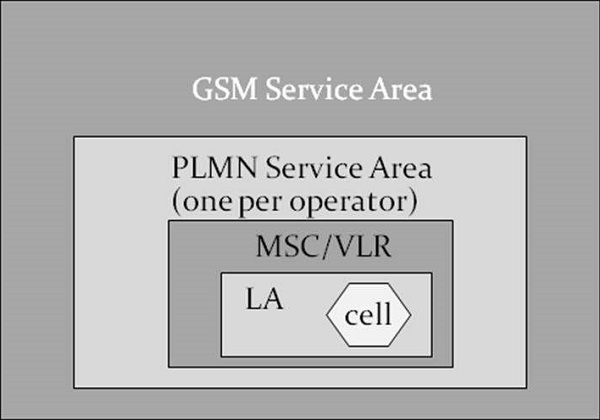
- UMTS Tutorial
- UMTS - Home
- History of Mobile Communication
- Cellular Concepts
- Cellular Concepts - Introduction
- GSM Architecture
- Cellular Concepts - GSM Radio Link
- Cellular Concepts - Mobility
- Cellular Concepts - GPRS
- Cellular Concepts - EDGE
- UMTS Introduction
- UMTS - A New Network
- UMTS - WCDMA Technology
- UMTS - HSPA Standardization
- UMTS - Objectives
- UMTS - Authentication
- UMTS - Success and Limitations
- UMTS Networks Standardization
- UMTS - 3GPP
- UMTS - Radio Access Network
- UMTS - Evolved Packet Core
- UMTS Protocol Environment
- UMTS - GPRS Tunneling Protocol
- UMTS - Proxy Mobile IPv6
- UMTS - EAP
- UMTS - IKEv2 & MOBIKE
- UMTS - SCTP
- UMTS - NAS Signaling Protocol
- UMTS Useful Resources
- UMTS - Quick Guide
- UMTS - Useful Resources
- UMTS - Discussion
Cellular Concepts - GPRS Architecture
The following new GPRS network adds the following elements to an existing GSM network.
Packet Control Unit (PCU).
Serving GPRS Support Node (SGSN) − the MSC of the GPRS network.
Gateway GPRS Support Node (GGSN) − gateway to external networks.
Border Gateway (BG) − a gateway to other PLMN.
Intra-PLMN backbone − an IP based network inter-connecting all the GPRS elements.
General Packet Radio Service (GPRS)
GPRS introduces packet data transmission to the mobile subscriber.
GPRS is designed to work within the existing GSM infrastructure with additional packet switching nodes.
This packet mode technique uses multi-slot technology together with support for all coding schemes (CS-1 to CS-4) to increase the data rates up to 160 kbit/s.
The GPRS system uses the physical radio channels as defined for GSM. A physical channel used by GPRS is called a Packet Data Channel (PDCH).
The PDCHs can either be allocated for GPRS (dedicated PDCH) or used by GPRS only if no circuit-switched connection requires them (on-demand). The operator can define 0-8 dedicated PDCHs per cell. The operator can specify where he wants his PDCHs to be located.
The first dedicated PDCH in the cell is always a Master PDCH (MPDCH). The on-demand PDCHs can be pre-empted by incoming circuit switched calls in congestion situations in the cell.
| Coding Scheme | Speed(kbit/s) |
| CS-1 | 8.0 |
| CS-2 | 12.0 |
| CS-3 | 14.4 |
| CS-4 | 20.0 |
Serving GPRS Support Node (SGSN) Functions
The SGSN or Serving GPRS Support Node element of the GPRS network provides a number of takes focused on the IP elements of the overall system. It provides a variety of services to the mobiles −
- Packet routing and transfer
- Mobility management
- Authentication
- Attach/detach
- Logical link management
- Charging data
There is a location register within the SGSN and this stores the location information (e.g., current cell, current VLR). It also stores the user profiles (e.g., IMSI, packet addresses used) for all the GPRS users registered with the particular SGSN.
Gateway GPRS Support Node (GGSN) Functions
The GGSN, Gateway GPRS Support Node is one of the most important entities within the GSM EDGE network architecture.
The GGSN organizes the inter-working between the GPRS/EDGE network and external packet switched networks to which the mobiles may be connected. These may include both Internet and X.25 networks.
The GGSN can be considered to be a combination of a gateway, router and firewall as it hides the internal network to the outside. In operation, when the GGSN receives data addressed to a specific user, it checks if the user is active, then forwards the data. In the opposite direction, packet data from the mobile is routed to the right destination network by the GGSN.
Upgradation of Equipment from GSM to GPRS
Mobile Station (MS) − New Mobile Station is required to access GPRS services. These new terminals will be backward compatible with GSM for voice calls. Three types of handsets are available. Type-A: GPRS & Speech (simultaneously), Type-B: GPRS & Speech (Auto switch), Type-C: GPRS or Speech (manual switch).
BTS − A software upgrade is required in the existing base transceiver site.
BSC − Requires a software upgrade and the installation of new hardware called the packet control unit (PCU). PCU is responsible for handling the Medium Access Control (MAC) and Radio Link Control (RLC) layers of the radio interface and the BSSGP and Network Service layers of the Gb interface. There is one PCU per BSC. The Gb interface, carry GPRS/EGPRS traffic from the SGSN (Serving GPRS Support Node) to the PCU.
GPRS Support Nodes (GSNs) − The deployment of GPRS requires the installation of new core network elements called the serving GPRS support node (SGSN) and gateway GPRS support node (GGSN).
Databases (HLR, VLR, etc.) − All the databases involved in the network will require software upgrades to handle the new call models and functions introduced by GPRS.
Location Information - GSM Service Area Hierarchy
Cell − Cell is the basic service area and one BTS covers one cell. Each cell is given a Cell Global Identity (CGI), a number that uniquely identifies the cell.
LA − A group of cells form a Location Area. This is the area that is paged when a subscriber gets an incoming call. Each Location Area is assigned a Location Area Identity (LAI). Each Location Area is served by one or more BSCs.
MSC/VLR Service Area − The area covered by one MSC is called the MSC/VLR service area.
PLMN − The area covered by one network operator is called PLMN. A PLMN can contain one or more MSCs.
GSM Service Area − The area in which a subscriber can access the network.
